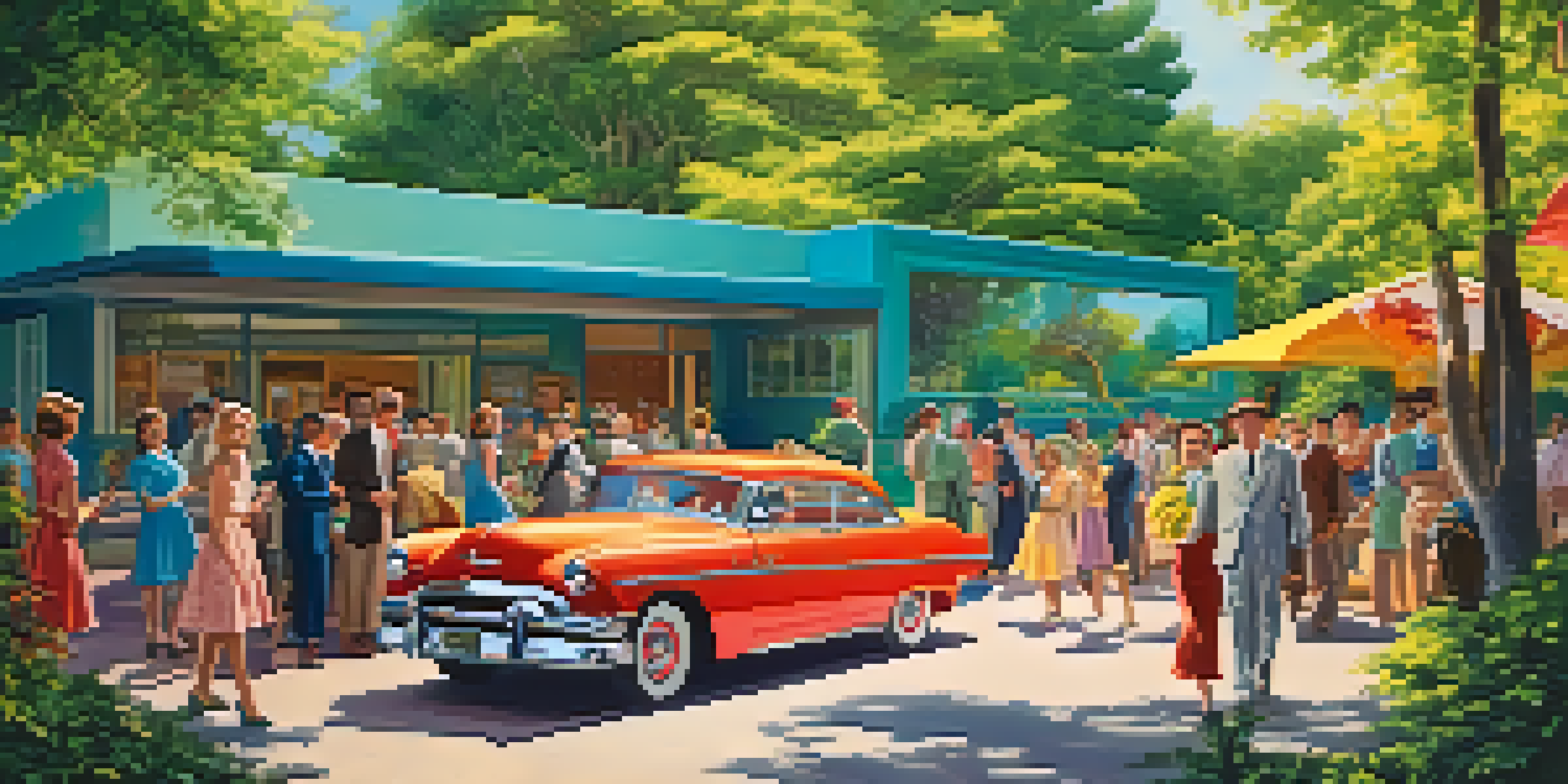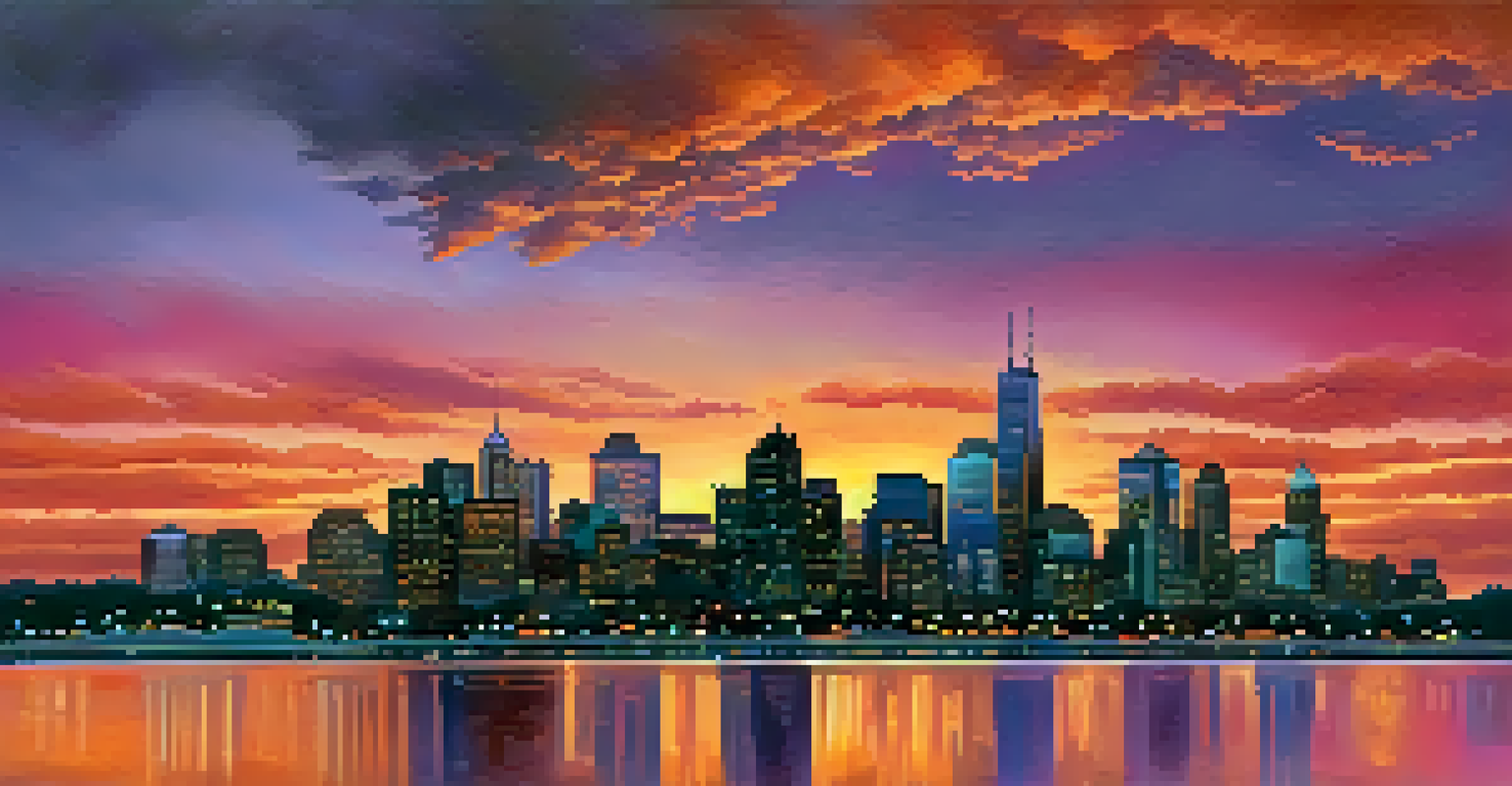The Evolution of Color Grading in Modern Cinematic Arts

Understanding Color Grading: A Brief Introduction
Color grading is the process of altering and enhancing the color of a motion picture. It’s an essential aspect of post-production that helps convey mood, emotion, and even symbolism in film. In essence, it's like putting on a pair of glasses that change how we perceive the world on screen.
Color is the keyboard, the eyes are the harmonies, the soul is the piano with many strings.
Historically, color grading was done physically, using filters and gels in the darkroom. Today, with advanced digital tools, filmmakers can manipulate color with precision, offering a wider range of creative possibilities. This transformation reflects the technological advancements that have empowered filmmakers to tell their stories in richer, more visually captivating ways.
As we delve deeper into the evolution of color grading, it becomes clear that this art form is not just about aesthetics; it’s about storytelling. The colors chosen can evoke specific feelings in the audience, guiding their emotional responses throughout the film.
The Early Days of Color in Film
The journey of color in film began in the early 20th century with the introduction of Technicolor. This groundbreaking technology allowed filmmakers to incorporate vibrant colors into their narratives, transforming the cinematic experience. Films like 'The Wizard of Oz' showcased this new capability, leaving audiences mesmerized.

Before Technicolor, films were predominantly black and white, which limited the emotional depth and storytelling potential. The addition of color opened new avenues for expression, allowing filmmakers to use hues symbolically. For instance, the use of red could signify passion, while blue might evoke sadness.
Color Grading Enhances Storytelling
Color grading is a vital tool that filmmakers use to convey emotions and deepen narrative impact.
As the technology progressed, filmmakers began to experiment with color grading techniques, setting the stage for the sophisticated methods we see today. The transition from simple color application to nuanced grading paved the way for future innovations in visual storytelling.
The Rise of Digital Technology in Color Grading
The 21st century saw a significant shift from traditional film to digital formats, bringing about a revolution in color grading. Digital tools like DaVinci Resolve and Adobe Premiere Pro allowed filmmakers to manipulate color with unprecedented control and creativity. This shift democratized the art of color grading, making it accessible to independent filmmakers.
Color is a power which directly influences the soul.
Digital technology not only enhanced the precision of color manipulation but also streamlined the workflow. Filmmakers could work faster and more efficiently, enabling them to focus on storytelling rather than getting bogged down by technical limitations. This evolution has led to a surge in visually stunning independent films.
As more filmmakers embraced digital grading, a new language of color emerged. This allowed for distinctive visual styles, with directors often employing color palettes that became synonymous with their work, such as Wes Anderson's pastel hues or David Fincher's darker tones.
The Art of Color Theory in Cinematic Storytelling
Color theory plays a crucial role in the world of cinematography, as it helps in understanding how colors interact and affect emotions. Filmmakers use complementary colors to create visual harmony or contrasting colors to evoke tension and drama. This strategic use of color can significantly enhance the narrative, guiding viewers’ feelings and perceptions.
For instance, in films like 'Moonlight,' color grading was used to reflect the protagonist's emotional journey, with warm tones representing moments of love and cold tones signifying isolation. This thoughtful application of color theory not only enriches the story but also creates a more immersive experience for the audience.
Digital Tools Have Transformed Grading
The shift to digital technology has democratized color grading, allowing more filmmakers to explore creative possibilities.
Understanding color theory allows filmmakers to communicate more effectively with their audience, presenting themes and emotions without needing dialogue. The colors become a silent yet powerful language that resonates deeply, leaving a lasting impact.
Trends in Color Grading: From Vintage to Vibrant
As the cinematic landscape continues to evolve, so do the trends in color grading. In recent years, there has been a noticeable shift toward more vibrant and saturated colors, reflecting a desire for visual escapism. Films like 'La La Land' and 'Spider-Man: Into the Spider-Verse' exemplify this trend, offering a feast for the eyes.
Conversely, there’s also a resurgence of vintage aesthetics, where filmmakers use color grading to evoke nostalgia. This can be seen in projects like 'The Artist,' which employed a muted color palette reminiscent of silent films. Such choices not only set the tone but also transport audiences to different eras.
These trends reveal how color grading is not just about beautifying a film; it's a reflection of cultural moments and societal shifts. As filmmakers explore these trends, they continue to push the boundaries of visual storytelling.
The Impact of Streaming Services on Color Grading
The rise of streaming platforms has revolutionized the way films and shows are produced and consumed, and color grading is no exception. With the increased demand for content, filmmakers are experimenting more than ever with color to stand out in a crowded marketplace. This has led to bold choices and innovative techniques in color grading.
Shows like 'Stranger Things' and 'The Queen's Gambit' have utilized color grading to create distinct visual identities that enhance their storytelling. The retro color palette of 'Stranger Things' not only evokes the 80s but also immerses viewers into the show's nostalgic atmosphere.
Streaming Platforms Drive Innovation
The rise of streaming services has encouraged filmmakers to experiment with bold color choices to capture audience attention.
Moreover, streaming services often provide filmmakers with greater creative freedom compared to traditional studios. This flexibility encourages experimentation with color, ultimately enriching the viewing experience and allowing unique narratives to emerge.
The Future of Color Grading in Film and Television
As technology continues to advance, the future of color grading in film and television looks promising. With emerging tools like artificial intelligence, filmmakers may soon have even more powerful resources at their disposal. This could lead to real-time color grading, where adjustments can be made on-the-fly during filming, enhancing efficiency and creativity.
Additionally, virtual reality (VR) and augmented reality (AR) are opening new avenues for color application. As these technologies become more mainstream, the way color is perceived and used in storytelling could be transformed, offering audiences immersive experiences like never before.

Ultimately, the evolution of color grading reflects the broader changes within the cinematic arts. As filmmakers continue to experiment and innovate, we can expect color grading to play an even more integral role in shaping the future of storytelling.